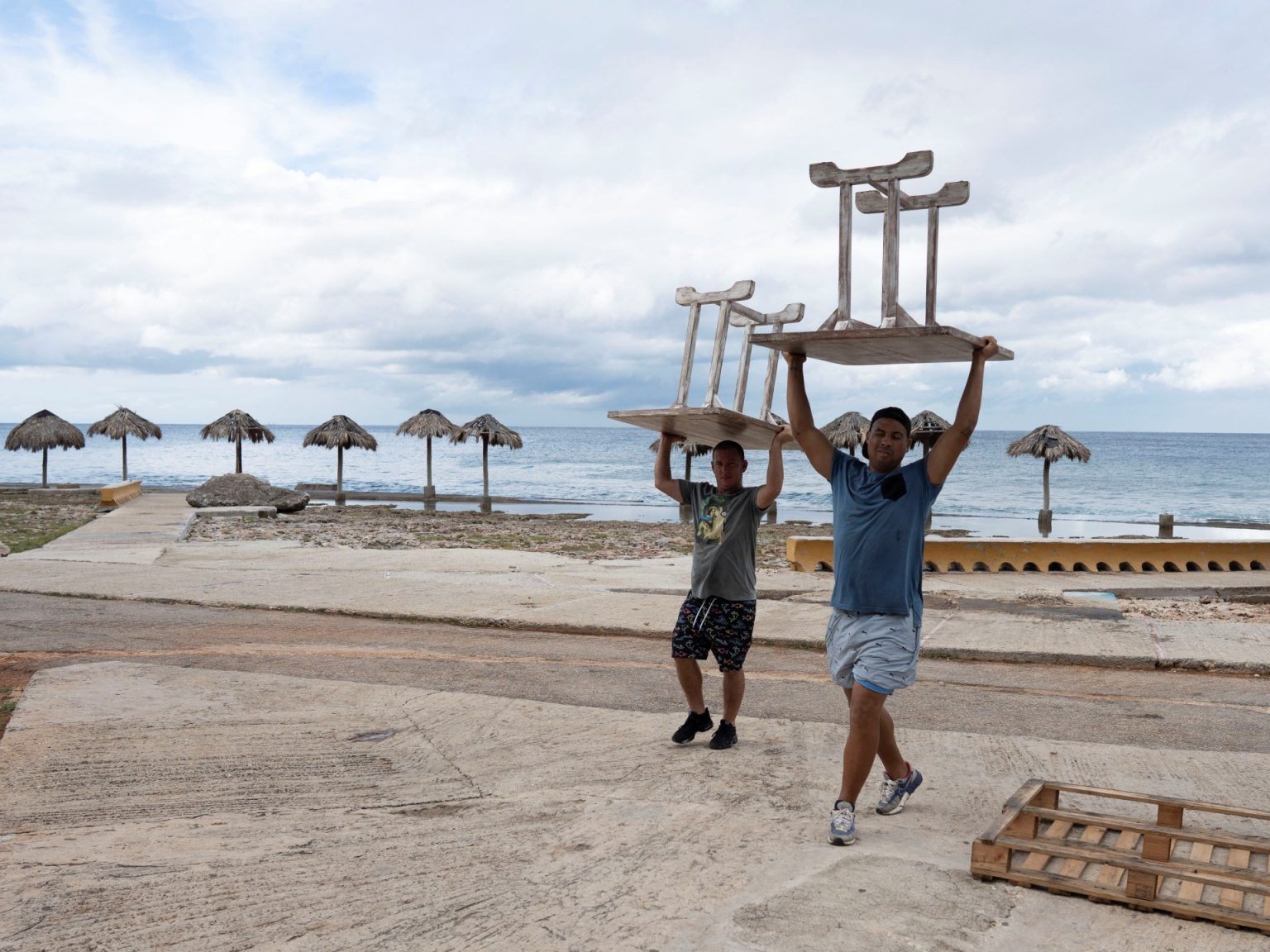Hurricane Rafael, now a major Category 3 hurricane, approached the coast of Cuba, triggering an island-wide power blackout. The storm brought sustained winds of 185km/h (115mph) to Cuba’s south shore, with the eye of the hurricane passing just east of Cuba’s Isle of Youth. The National Hurricane Center warned of life-threatening storm surges, damaging winds, and flash flooding across western Cuba, leading to widespread evacuations of tourists and residents. The farm provinces of Artemisa and Pinar del Rio were expected to take a near direct hit from the storm, while Havana was forecasted to experience tropical storm force winds and heavy rain before nightfall.
Earlier on Wednesday, Hurricane Rafael intensified into a powerful Category 3 hurricane, further exacerbating Cuba’s energy crisis. The island has been struggling with blackouts and recovering from Hurricane Oscar, which killed at least six people in the eastern part of the island two weeks prior. The power outage caused by Rafael was the third collapse of the national electricity system in recent weeks, with strong winds attributed to the shutdown of the system, according to the national power company, Union Electrica. The storm’s impact on Cuba’s infrastructure and agriculture, including valuable tobacco crops used for cigars, one of the island’s key exports, was a significant concern for the ruling Communist Party.
The storm’s path was projected to continue towards the southeastern Gulf of Mexico after hitting Cuba, with potential impacts on the US-Mexico border region over the weekend. The US Department of State issued an advisory for Cuba, offering departure flights to nonessential staff and American citizens and advising others to reconsider travel to the area due to the potential impact of Hurricane Rafael. The Cuban Civil Defence urged citizens to prepare for the storm’s landfall by remaining in place. A hurricane warning was in effect for parts of the Cayman Islands and several Cuban provinces, with warnings lifted in Jamaica following Rafael’s passage along the western coast.
Rafael, the 17th named storm of the season, is part of what the US National Oceanic and Atmospheric Administration predicted to be a well above-average hurricane season in 2024. The forecast included 17 to 25 named storms, with up to 13 hurricanes and four major hurricanes expected. The average Atlantic hurricane season typically sees 14 named storms, seven hurricanes, and three major hurricanes. Rafael is the 11th hurricane to form in 2024, with five becoming major Category 3 storms with sustained winds exceeding 178km/h (111mph). The storm impacted Jamaica with power outages, flooding, and landslides before moving towards Cuba, where it caused widespread evacuations and a nationwide power outage.
As Rafael approached the coast of Cuba, concerns about its potential impact on infrastructure, agriculture, and residents escalated, prompting extensive preparations and evacuations. The storm’s intensity and destructive potential led to warnings of life-threatening conditions, including storm surges, damaging winds, and flash flooding across western Cuba. Despite efforts to mitigate the storm’s impact, the Cuban government faced challenges in managing the aftermath of Rafael, including prolonged power outages and infrastructure damage. The storm’s continuation towards the southeastern Gulf of Mexico raised concerns for the US-Mexico border region, prompting advisories and precautions to be implemented.


